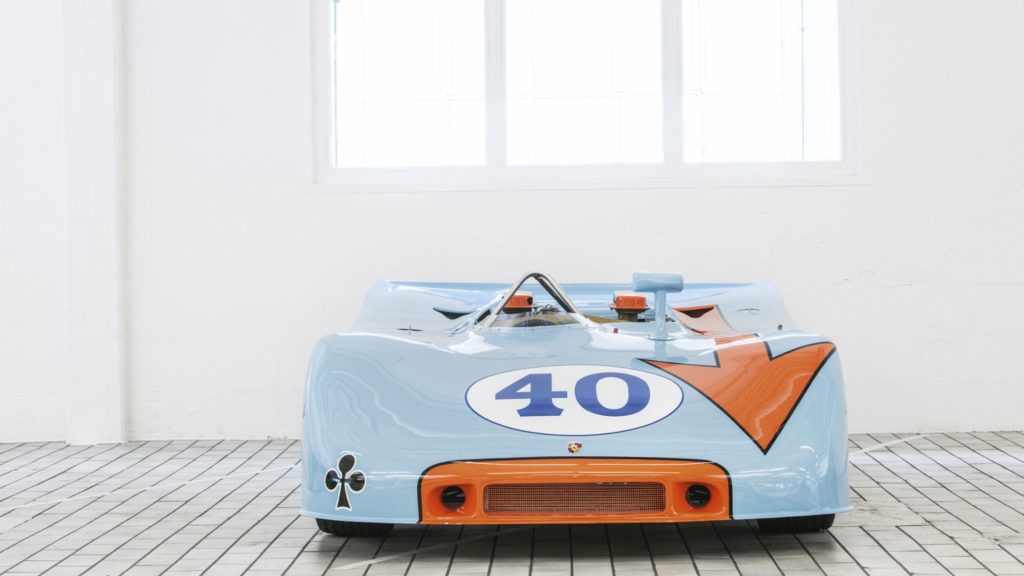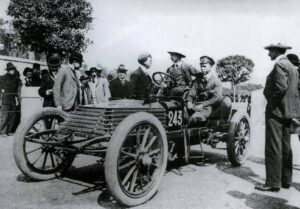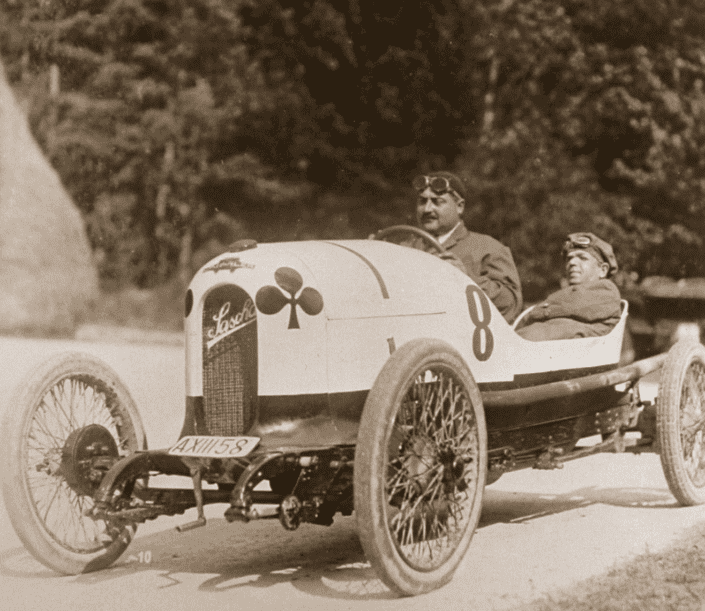
Small cars hold an attraction – I would imagine since les Frères Renault first took-on the Edwardian giants – and the idea of a smaller car as a generally more efficient machine has held sway. An efficient use of resources, or merely a more stressed & stressful way of covering the same distance? I suppose that’s largely hypothetical within the restrictions of modern motorsport, but still relevant in road car production. Especially if vehicle weight becomes the next political target, or taxation point.
There once was a man who cut to the core of these debates. A man who lived & worked in the hope of realising three great projects in his lifetime; the ultimate cutting-edge racing car, a land speed record machine, and a small car for the masses. His focus on these goals changed the course of 20th century history; for when presented in 1932 with the offer of a new life in Russia for his family & workforce, and the entire resources of the Soviet Union being put at his disposal, Ferdinand Porsche politely declined. What good was there in remaking the industry of an entire empire in your own image if you couldn’t go motor racing? If you couldn’t realise your dreams?
Ten years prior to his Russian sojourn Porsche had already made the first draft of his small car, and the world came to know it at The Greatest Race.
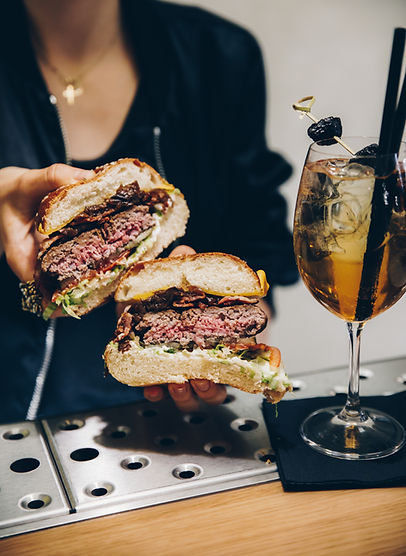
Cafe Elektric at the Kolowrat Palace in Prague is our kinda place. Lucky card symbols as a recurring motif, an image of an old racing car on the wall.
Owner Francesca Kolowrat has themed it around her great-uncle, film producer Count Alexander Kolowrat-Krakowský – Sascha, to family & friends. And what friends! Sascha was responsible for introducing to the world directors Michael Curtiz & Alexander Korda, and Marlene Dietrich.
Kolowrat was also a racing driver and small-car enthusiast, and inevitably he pushed his friend Ferdinand Porsche to follow-through on his idea for a small sports car.
So when Porsche completed his 89mph, 1100cc, overhead cam Austro-Daimler, it was christened ‘Sascha’; and when at 6:30am on 2 April 1922 it was first to be flagged away at the Targa Florio, Sascha Kolowrat was at the wheel.
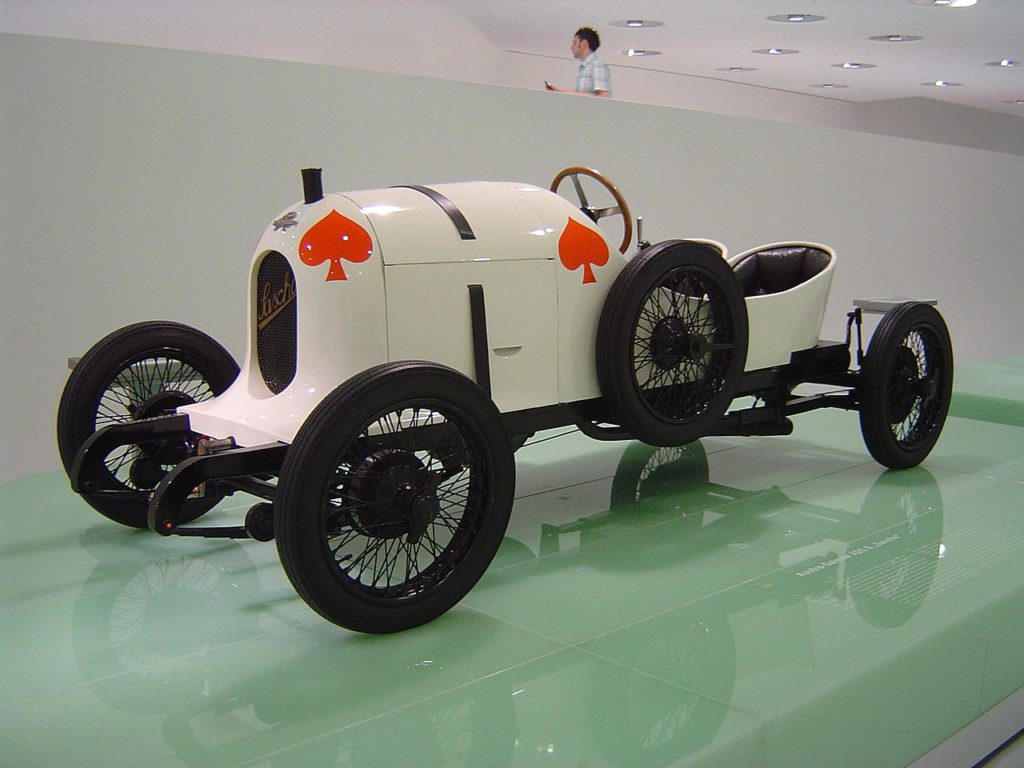
The 1922 Targa Florio is important in automotive history. While the race would be won by Count Masetti on his privately entered 1914 Grand Prix Mercédès – one of three such cars updated by Daimler Motoren Gesellschaft for the event – it is more significant for the first appearance of a supercharged racing Mercédès. The blown Mercédès becoming an icon – supercharging synonymous with Mercedes-Benz racing cars for the next 30 years. So much so that, even after González & Lampredi killed the supercharger at Silverstone in July 1951, Mercedes seriously considered the 750cc-supercharged option in the new Formula One regulations for 1954.
Österreichische Daimler Motoren AG entered four of the new Austro-Daimler Sascha 5/15 PS for the 1922 Targa Florio – run over four laps of the Medio circuit, 268 miles. Each of the Saschas adorned with a playing card suit motif, to make them more-easily recognisable – the Ace of Clubs for Kolowrat.
Three of the Saschas were in the 1100cc sports category; and one striped, slightly bored-out, Ace of Diamonds car in the unlimited racing car category, next to the Grand Prix Mercédès. A bold move, but not unexpected, for the driver of this car was one Alfred Neubauer. Paul Daimler’s new supercharged Mercédès may point to the future, but the men who will take it there are in the Austrian contingent… waiting to change motoring & racing forever.
Unfortunately for Kolowrat, his race would be run at Caltavuturo on the opening lap. Of his teammates; Pöcher retired on the last lap, leaving Kuhn to bring home the only remaining car in the under-1100cc class in 8 hours, 19minutes and 46.8 seconds.
In the racing car class, Neubauer on his Sascha covered the course at an average speed of 34.7 mph. This equated to 19th place overall, 59 minutes behind the winner. Still, Porsche’s little Austro-Daimler was only 38 minutes behind Paul Daimler’s new super-charged wonder – and Masetti’s Mercédès Grand Prix car winning speed was only 39 mph.
The European press couldn’t get enough of the little Austrian cars. Gazetta dello Sport in particular.
Apart from the technical progress in general, we must also note the triumph of the smallest engines. Up to the evening before the race we did not rate the four Austro-Daimlers which Kolowrat believed in so implicitly, yet four laps of the Madonie circuit were enough to change the mind of even the most sceptical of us… Until now one would have thought it virtually impossible to obtain such performance, speed and sturdiness from a 4-cylinder engine of such small cubic capacity… To achieve this, every means had to be used to reduce weight, both by choosing higher quality materials and by the new design of a high-revving engine with it’s light but strong pistons and connecting rods. Furthermore, it was necessary to use fully the swept volume of the engine and to enlarge valves to the maximum, to arrange rational carburation and ignition so as to achieve the final output of up to 50 bhp from such a tiny car. The chassis is no less impressive… Without fear or favour we declare that these Austro-Daimlers were the revelation of the Targa Florio… They proved the quality of engines of maximum power output yet small swept volume and they were mounted in a chassis of the most modern construction.
Gazetta dello Sport, 3 April 1922
You would think that the other board members would be delighted; that Porsche would get the green light to put the Sascha into production. You would be wrong. The Directors couldn’t understand the attraction, or use of motor sport. Porsche tried to make them see sense – in 1922 Austro-Daimler had raced in fifteen countries, and won forty-three times… but then…
At Monza one of the 2-litre cars suffered a wheel failure and somersaulted off the track. Fritz Kuhn was killed instantly. The board hardened their views and eventually, as the temperature rose, Ferdinand Porsche stormed out… and off, inevitably, to Untertükheim. To create the next chapter of motor racing history with Mercedes-Benz… and to try & persuade them that a small car is the future.
Ever restless, ever brilliant Ferdinand Porsche.
Post Script
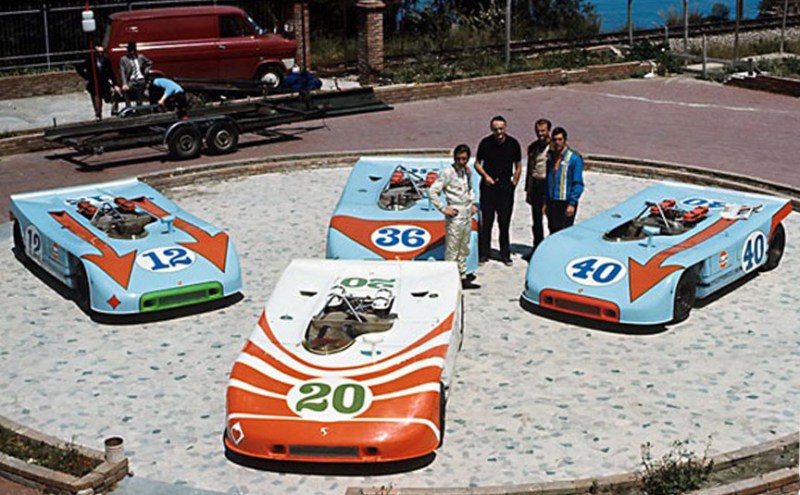
For the 1970 Targa Florio Porsche unveiled an amazing, small racing car – the 908/3. Three cars entered by JW Automotive, one by Porsche Salzburg. To distinguish the cars, playing card suit motifs were used. Kinnunen & Rodriguez’s 908/3 carried the Ace of Clubs – and as it raced to second place, behind the Ace of Diamonds 908/3 of Siffert & Redman, I wonder if somewhere Sascha Kolowrat & Alfred Neubauer had a rye smile? There’s a symmetry to that… there may even be a movie in it.
